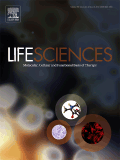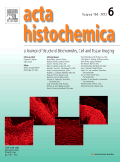
CELL
Scope & Guideline
Exploring the intricate world of cellular processes.
Introduction
Aims and Scopes
- Cellular Aging Mechanisms:
Research on the biological processes that contribute to aging at the cellular level, including cellular senescence, epigenetic changes, and oxidative stress. - Neurodegenerative Diseases:
Investigation into the cellular and molecular mechanisms underlying neurodegenerative diseases such as Alzheimer's and Parkinson's, focusing on tau pathology, amyloid-beta dynamics, and neuroinflammation. - Metabolism and Aging:
Studies examining how metabolic pathways and interventions, such as caloric restriction and pharmacological agents, influence aging processes and health outcomes. - Stem Cell Biology:
Exploration of stem cell behavior in aging, including their differentiation potential, regenerative capacity, and response to environmental cues. - Microbiome and Aging:
Research on the interplay between the gut microbiome and aging, investigating how microbial communities affect metabolic health and age-related diseases. - Therapeutic Interventions:
Development and evaluation of therapeutic strategies, including senolytics and dietary interventions, aimed at mitigating the effects of aging and enhancing healthspan. - Systems Biology Approaches:
Utilization of multi-omics strategies to understand the complex interactions governing cellular aging and disease.
Trending and Emerging
- Epigenetic Modifications and Aging:
A growing body of research is focusing on how epigenetic changes influence aging processes, including DNA methylation and histone modifications, as potential biomarkers and therapeutic targets. - Inflammaging and Immune Senescence:
Increasing attention is being paid to the role of chronic inflammation in aging and how immune system alterations contribute to age-related diseases, emphasizing the need for immunomodulatory therapies. - Microbiome Influence on Aging:
Emerging studies are exploring the role of the gut microbiome in modulating aging and healthspan, highlighting the potential for microbiome-targeted interventions. - Technological Advances in Aging Research:
The integration of advanced technologies such as single-cell sequencing and multi-omics approaches is rapidly gaining traction, enabling more nuanced insights into aging mechanisms. - Personalized Medicine and Aging:
There is a trend towards developing personalized therapeutic strategies based on individual genetic and metabolic profiles, aiming to optimize interventions for age-related conditions. - Regenerative Medicine and Tissue Engineering:
Research focusing on harnessing the potential of stem cells and regenerative medicine to combat age-related degeneration is on the rise, with implications for tissue engineering and repair.
Declining or Waning
- Traditional Pharmacological Interventions:
There has been a noticeable decrease in studies focusing solely on traditional small-molecule pharmacological interventions, with a shift towards exploring holistic and multi-targeted therapeutic strategies. - Basic Cellular Mechanisms without Disease Context:
Research that purely investigates cellular mechanisms in isolation, without a clear connection to aging or disease relevance, is becoming less frequent as the journal emphasizes translational and applied research. - Animal Models with Limited Relevance to Human Aging:
Studies using outdated or less relevant animal models for aging research are declining as the field moves towards models that better mimic human aging processes. - Single-Factor Studies:
There is a waning interest in research that examines the effects of single factors on aging, as the complexity of aging necessitates a more integrative approach.
Similar Journals

LIFE SCIENCES
Fostering innovation in pharmacology and toxicology.LIFE SCIENCES, published by PERGAMON-ELSEVIER SCIENCE LTD, is an esteemed international journal that has been advancing the field since its inception in 1962. With an ISSN of 0024-3205 and an E-ISSN of 1879-0631, it serves as a critical forum for researchers, professionals, and students within the realms of biochemistry, genetics, molecular biology, medicine, and pharmacology. Currently ranked in the Q1 category across multiple disciplines, including a remarkable 2nd rank in General Pharmacology, Toxicology, and Pharmaceutics, the journal maintains a prestigious position in academic circles, evidenced by its high impact factor and significant percentile ranks. While LIFE SCIENCES is not an open-access journal, it remains dedicated to publishing high-quality, peer-reviewed research that pushes the boundaries of knowledge and fosters innovation. With converged research interests leading into 2024, LIFE SCIENCES continues to be a pivotal resource for the dissemination of influential findings, making it an indispensable tool for those engaged in the life sciences.

npj Aging and Mechanisms of Disease
Connecting Research to Transform Aging Sciencenpj Aging and Mechanisms of Disease is a leading open-access journal dedicated to advancing the understanding of the biological mechanisms underlying aging and age-related diseases. Published by NATURE PORTFOLIO in the United Kingdom, this journal has established itself as a vital resource within the fields of Aging and Geriatrics and Gerontology, proudly holding a prestigious Q1 ranking in both categories as of 2023. With an impressive Scopus ranking, placing it in the top 10 for Geriatrics and Gerontology, and the top 9 for Aging, the journal is committed to disseminating high-quality, peer-reviewed research that offers innovative insights and fosters collaboration among researchers and practitioners. Since its inception in 2015, npj Aging and Mechanisms of Disease has embraced the open-access model, ensuring that groundbreaking findings are freely available to all, thereby promoting widespread knowledge-sharing within the scientific community. This journal serves as an essential platform for those seeking to explore the complex interplay of genetic, molecular, and environmental factors that influence aging and its associated challenges.

Aging-US
Elevating Conversations in Aging and Cell BiologyAging-US is a premier peer-reviewed journal dedicated to advancing the field of aging research and cell biology. Published by IMPACT JOURNALS LLC, this journal serves as a vital resource for researchers and professionals exploring the biological mechanisms of aging and their implications for health and disease. With a commendable impact factor reflected in its 2023 Scopus rankings, where it stands at Rank #10/38 in the category of Aging and Rank #63/285 in Cell Biology, Aging-US exemplifies rigorous scientific excellence. Its open access policy enhances accessibility, fostering a wider dissemination of knowledge in both academic and clinical settings. Spanning from 2009 to 2024, the journal provides a platform for groundbreaking studies and innovative methodologies, ensuring that it remains at the forefront of the dynamic conversations surrounding aging and cellular biology. Engage with Aging-US to contribute to the evolving narratives of longevity and cellular health.

GERONTOLOGY
Exploring the Intersections of GerontologyGERONTOLOGY, published by KARGER in Switzerland, is a prominent journal dedicated to the study and understanding of aging, with a keen focus on the interdisciplinary aspects of geriatric medicine and gerontology. Established in 1957, it has provided a platform for cutting-edge research that covers a wide range of topics including, but not limited to, the biological, psychological, and sociological aspects of aging. With an impressive ranking that places it in the Q3 category for Aging and Q2 for Geriatrics and Gerontology as of 2023, the journal continues to attract high-quality submissions from researchers worldwide, evidenced by its Scopus rankings, which position it favorably within relevant fields. While it operates under a subscription model, the journal remains committed to advancing knowledge that informs practice and policy within an aging society. By fostering innovative studies and discussions, GERONTOLOGY serves as an essential resource for researchers, health professionals, and students alike, dedicated to the care and understanding of older adults.

Cell and Bioscience
Unlocking the Secrets of Life at the Cellular LevelCell and Bioscience is a prestigious open-access journal published by BMC that has been at the forefront of biochemistry, genetics, and molecular biology since its inception in 2011. With an impressive impact factor, this journal has established itself as a vital resource for researchers and professionals in these rapidly advancing fields, reflecting its high ranking of #29 out of 221 in the Scopus classification and placing it in the 87th percentile. Based in the United Kingdom, Cell and Bioscience aims to foster innovation and dissemination of research findings addressing critical biological questions through rigorous peer-reviewed articles and inter-disciplinary approaches. The journal's open-access model ensures unrestricted access to transformative research, promoting collaboration and knowledge sharing among academics, students, and practitioners worldwide. With a commitment to maintaining excellence in the field, Cell and Bioscience provides an essential platform for those looking to contribute to the evolving landscape of biosciences.

ACTA HISTOCHEMICA
Pioneering Research at the Intersection of Histochemistry and MedicineACTA HISTOCHEMICA, a prestigious journal published by Elsevier GmbH, is dedicated to advancing the field of histochemistry and its applications within cell biology and medicine. With an ISSN of 0065-1281 and an E-ISSN of 1618-0372, the journal provides a critical platform for the dissemination of high-quality research findings and reviews, integral for both emerging and established scholars. Since its inception in 1954 and continuing through to 2024, ACTA HISTOCHEMICA has maintained a strong commitment to publishing significant advancements in histology and cell biology, as evidenced by its categorization in Q3 for Cell Biology and Histology, as well as Q2 in miscellaneous medicine for the year 2023. The journal ranks favorably in Scopus, holding the 27th rank in Histology and a 200th rank in Cell Biology, highlighting its importance to the academic community. With its headquarters in Munich, Germany, ACTA HISTOCHEMICA continues to attract contributions from global researchers, fostering an international dialogue essential for the growth of knowledge in histochemistry and related disciplines.

Epigenomes
Illuminating the Pathways of Epigenetic MechanismsEpigenomes is a distinguished open access journal published by MDPI, dedicated to advancing the field of epigenetics and its interdisciplinary connections to biochemistry, genetics, and molecular biology. Since its inception in 2017, this journal has provided a transparent platform for researchers to share their findings, contributing to a deeper understanding of epigenetic mechanisms and their implications in health, toxicology, and mutagenesis. Ranked in the Q2 quartile across multiple categories, including biochemistry and genetics, Epigenomes is recognized for its scholarly contributions, reflected in its notable Scopus rankings. Readers benefit from a wealth of open access articles, fostering innovation and collaboration within the academic community. With its headquarters in Switzerland and an unwavering commitment to scientific rigor, Epigenomes is positioned as a vital resource for researchers, professionals, and students seeking to deepen their insights into the epigenomic landscape.

GeroScience
Connecting Scholars in the Quest for LongevityGeroScience, published by Springer, is an esteemed open-access journal that focuses on the multidisciplinary field of aging research. Since its inception in 2017, the journal has quickly established itself as a leader in its field, achieving impressive Q1 quartile rankings across various categories, including Aging, Cardiology and Cardiovascular Medicine, Geriatrics and Gerontology, and Complementary and Alternative Medicine, as per 2023 evaluations. With a significant impact factor that underscores its influence and reach in academia, GeroScience aims to disseminate high-quality research that addresses the complex challenges and advancements related to aging. Its accessible publication format fosters greater dissemination of knowledge and encourages collaboration among researchers, practitioners, and students eager to contribute to the growing body of work on age-related health issues. As it continues to thrive, GeroScience remains a pivotal resource for anyone looking to stay at the forefront of aging research.

EXPERIMENTAL GERONTOLOGY
Exploring Interdisciplinary Approaches to Enhance HealthspanEXPERIMENTAL GERONTOLOGY is a prestigious journal published by PERGAMON-ELSEVIER SCIENCE LTD, dedicated to the evolving field of aging research. With a rich history dating back to 1964 and continuing through 2024, this journal aims to advance the understanding of the biological processes underlying aging and develop interdisciplinary approaches to improve healthspan. ENCOMPASSING a broad scope, including *biochemistry*, *cell biology*, *endocrinology*, *genetics*, and *molecular biology*, it holds impressive rankings in the 2023 Scopus Ranks, featuring in Q1 and Q2 quartiles across multiple categories. This positions it as a vital resource for researchers and professionals focused on gerontology and related fields. As a subscription-based journal without open access, EXPERIMENTAL GERONTOLOGY ensures the dissemination of high-quality research through rigorous peer review, making it an essential publication for those aspiring to remain at the forefront of aging studies.

Genes & Diseases
Innovating solutions through genetic research and discovery.Genes & Diseases, published by KEAI PUBLISHING LTD, is a premier open-access journal dedicated to advancing the fields of genetics, biochemistry, and molecular biology. Established in 2014 and headquartered in Beijing, China, this journal has quickly risen to prominence, securing a place in the prestigious Q1 quartile in Biochemistry and Genetics (clinical), as well as Q2 in Cell Biology and Q1 in Molecular Biology as of 2023. With a commitment to disseminating cutting-edge research, Genes & Diseases serves as a critical platform for researchers, professionals, and students alike, ensuring that high-quality scientific work is openly accessible to the global community. The journal's exceptional impact is underscored by its selective Scopus rankings, which reflect its influence and relevance in key scientific domains, making it an essential resource for those exploring the intersections of genetics and disease pathology.